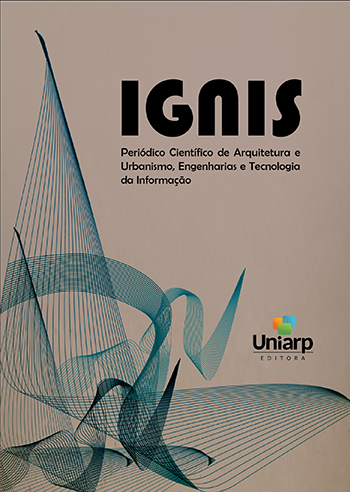ANÁLISE DE DESEMPENHO DO CONCRETO COM SUBSTITUIÇÃO DE UMA PORCENTAGEM DO AGREGADO MIÚDO POR RESÍDUOS DE USINAGEM DA INDÚSTRIA METAL MECÂNICA
Palavras-chave:
Concreto. Resíduo. Cavacos de açoResumo
Atualmente o mundo vem demonstrando um incentivo grandioso a ações para a sustentabilidade, e o aproveitamento de resíduos industriais na construção civil é uma alternativa para destinar esses materiais, usufruindo dos benefícios que podem oferecer. Buscou-se com este trabalho a substituição de uma porcentagem do agregado miúdo por cavacos de aço na confecção do concreto. Com isso seria possível diminuir a exploração de recursos naturais como a areia, utilizando resíduos industriais, que se forem descartados de maneira incorreta podem causar impactos ambientais. Foi iniciado este trabalho elaborando o levantamento bibliográfico, para que possa auxiliar no decorrer do mesmo. Este projeto teve como objetivo geral, comparar a resistência mecânica do concreto convencional e do concreto com resíduo de usinagem (cavaco de aço), substituindo uma porcentagem do agregado miúdo pelo resíduo. Os materiais essenciais para realização deste trabalho foram o agregado miúdo, agregado graúdo, água, cimento Portland e o resíduo (cavacos de aço). Sendo assim, para obter os resultados desejados foram realizados os ensaios no Laboratório de Materiais e Solos da UNIARP, como a caracterização dos materiais, granulometria, massa específica dos agregados, massa unitária, absorção de água, trabalhabilidade do concreto e ensaio de resistência a compressão. Todos esses ensaios estão descritos na metodologia deste trabalho, demonstrando as etapas e normas da ABNT que foram seguidas de acordo com cada procedimento, para obter os resultados e alcançar os objetivos propostos.
Palavras-Chave: Concreto. Resíduo. Cavacos de aço.
ABSTRACTNowadays the world has been demonstrating a great incentive to actions for sustainability, and the use of industrial waste in construction is an alternative to allocate these materials, taking advantage of the benefits they can offer. The aim of this work is to substitute a percentage of the small aggregate for steel chips in the confection of the concrete. This would reduce the exploitation of natural resources such as sand, using industrial waste, which if discarded incorrectly can cause environmental impacts. This work was started by preparing the bibliographical survey, so that it can help in the course of it. This project aims to compare the mechanical strength of conventional concrete and concrete with machining residue (steel chip), replacing a percentage of the small aggregate with the residue. The essential materials for this work were the small aggregate, aggregate, water, Portland cement and the residue (steel chips). In order to obtain the desired results, the tests were carried out in the Materials and Soils Laboratory of UNIARP, such as the characterization of the materials, granulometry, specific mass of the aggregates, unit mass, water absorption, concrete workability and compressive strength test . All these tests are described in the methodology of this work, demonstrating the steps and norms of the ABNT that were followed according to each procedure.
Keywords: Concrete. Residue. Steel shavings.
Downloads
Publicado
Edição
Seção
Licença
Autores que publicam nesta revista concordam com os seguintes termos:- Autores mantém os direitos autorais e concedem à revista o direito de primeira publicação, com o trabalho simultaneamente licenciado sob a Licença Creative Commons Attribution que permite o compartilhamento do trabalho com reconhecimento da autoria e publicação inicial nesta revista.
- Autores têm autorização para assumir contratos adicionais separadamente, para distribuição não-exclusiva da versão do trabalho publicada nesta revista (ex.: publicar em repositório institucional ou como capítulo de livro), com reconhecimento de autoria e publicação inicial nesta revista.
- Autores têm permissão e são estimulados a publicar e distribuir seu trabalho online (ex.: em repositórios institucionais ou na sua página pessoal) a qualquer ponto antes ou durante o processo editorial, já que isso pode gerar alterações produtivas, bem como aumentar o impacto e a citação do trabalho publicado (Veja O Efeito do Acesso Livre).






